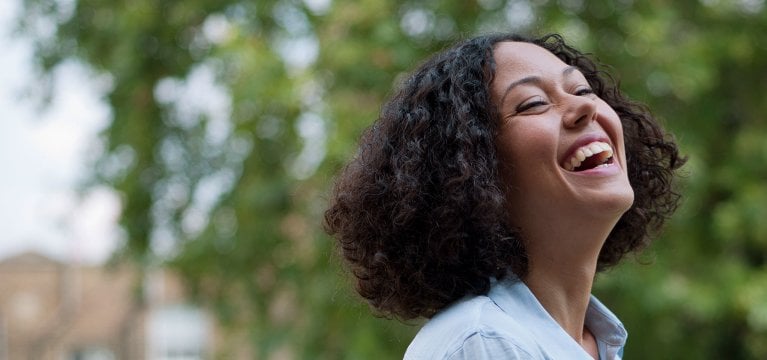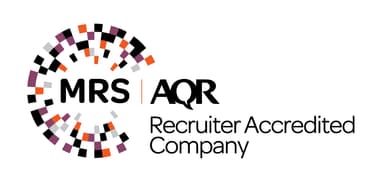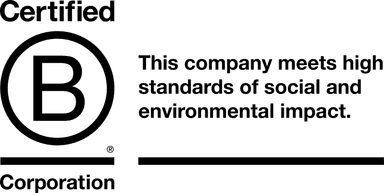
Innovation & Empathy: The People-First Approach To Universal Design
December 13, 2021
Let’s face it: Good intentions alone don’t make good products.
You could drown in the amount of marketing-advice content reiterating the importance of knowing your audience and making genuine connections to people… and yet, a huge swathe of the population is still being left out in the cold.
According to the World Health Organization, approximately 1 billion people worldwide live with a disability. But a recent Nielsen study found that only 1% of advertisements include representation of disability-related themes, visuals, or topics.
It was a fact that came around as part of our work with Tommy Hilfiger on their multi-award-winning Adaptive line and saw us start our ‘Firefish In Residence’ program in the US.
This program sees us bring in new expertise and opinions across our client projects, and our first is focused on fostering conversations about universal design and disability representation – with actor and disability advocate, AJ Murray.
“Advertising is so important, because what’s the use of making everything adaptable and accessible if the people you’re trying to serve don’t even know those products are out there?” says AJ.
The trouble is, even while so many brands now make more of an effort to be inclusive, they’re not always factoring in disability into the equation. Even diversity-specific brand campaigns don’t always include disabled people.
“Years ago there was a big Dove campaign celebrating different bodies,” said AJ. “Can you imagine what it would have meant to me to see disabled bodies included in that? Just because I’m disabled, doesn’t mean I don’t use soap!”
This is something Dove have been on a mission to change – with them seeking to celebrate all bodies and foster body positivity with their Real Beauty campaign over the last few years – even partnering with Firefish on it and winning a Gold at the ARF David Ogilvy Awards in 2020 for their Skin Stories campaign. Another thing they know is that there is always more to be done to be truly inclusive and representative, but it is a challenge they continue to tackle, admirably.

So, how can your brand craft more inclusive advertising, experiences, and products? It’s simpler than you might think. It starts with having the right conversations—because you can’t make design inclusive until your strategic process is inclusive, too.
Don’t be afraid to get started – you don’t have to boil the ocean.
When we talk to brands who haven’t done much in the universal design space, they usually say “I just don’t know where to start” or “I’m afraid I’ll get it wrong.”
And it’s true that bold, innovative change does require a certain amount of fearlessness. But our years of experience have proved to us the hardest part of universal design is simply choosing to get started.
Think of it this way: every decision, every change, and every step forward you make doesn’t have to be world-shattering and life-changing. Progress doesn’t have to happen at the speed of light. Moving a little slower, but a lot more thoughtfully, will mean a better experience for your brand and for consumers.
Instead of letting the importance of the end goal hover over you, clouding your creativity and compassion with fear and anxiety, take a step back and focus on the simple things you can control right now—namely, the people doing the work with you.
Start by…
- Asking the right people the right questions. Seek out the guidance of people with the lived experiences you’re looking to serve, and take the time to hear their needs, wants, and concerns. Truly universal design stems from empathy. Without compassion and understanding, you can’t innovate in any meaningful way.
- Getting everyone on the team on board. Align all aspects of your organization—product development, marketing, sales, design, ecommerce, customer service—so that everyone is clear on your objective and working together to make it happen.
- Turning passion into productivity. Gather together people from different backgrounds who are all passionate about making universal design a reality. Diverse perspectives will help you challenge the existing status quo and allow you to work towards holistic solutions from different angles.
The bottom line? With the right people and the right perspective, anything is possible.
In 2016, Tommy Hilfiger identified that there was an estimated 1 billion people in the world with some form of disability and, while clothing exists that met their needs, it often put function before fashion. They wanted to change this with their adaptive collection and so came to Firefish to be their Human Strategy Partner on that journey. You can watch Beth Broughton, President of Firefish USA, chair a session that details that great partnership journey as part of the Fashion Institute of Technology’s Changemakers annual conference, along with Sarah Horton – Senior Director of Innovation and Integrated Marketing for Tommy Hilfiger; and Lolo Spencer – disability lifestyle influencer and model for the collection.

What can our work with Tommy teach us?
Tommy’s Adaptive line isn’t just an example of successful universal design, but an example of creating a compassionate, human-first consumer experience. Often, you’re educating your consumers alongside yourself, providing them not just with a universal product or service, but with a series of stepping stones to lead them to a solution that works best for their lives.
We always say talking to people and getting inside their heads is key. You can’t assume you know what people need and want. You have to ask, and you have to listen to the answer. Most importantly, you have to keep asking. When it comes to inclusion and design, conversations are always ongoing. Don’t think of universal design as an end goal to achieve, but a way of constantly evolving your product or service to match people’s needs.
When brands dedicate themselves to putting people first, they build trust with consumers. When they partner with the right strategists, they can tap into the insights that let them build experiences from the ground up. And when brands do both, they can create inclusive products that change lives.
As AJ so succinctly puts it, “If you make the world accessible, we will come.”
Let’s innovate, grow, and make the world a better place together.
At Firefish, we fundamentally believe that it is only by looking at design through a diverse, human lens that we can generate breakthrough insights and innovative, inclusive products and services.
Getting started in universal design really isn’t as complicated or scary as you might think. As long as you’re open to starting that conversation, you have the potential to change the world.
And if you’re not sure where to start… Well, that’s why we’re here. Ready and waiting to be your Human Strategy Partners, fostering the conversations and connections that deliver real, practical solutions. Since our work with Tommy Hilfiger, we have worked with a whole host of brands and businesses on these types of challenges, from Barclays to Diageo, Unilever to Nestle.
Get in touch today to find out how your brand can step into universal design and together, we can make the world an easier, more inclusive, and more fun place to live.


